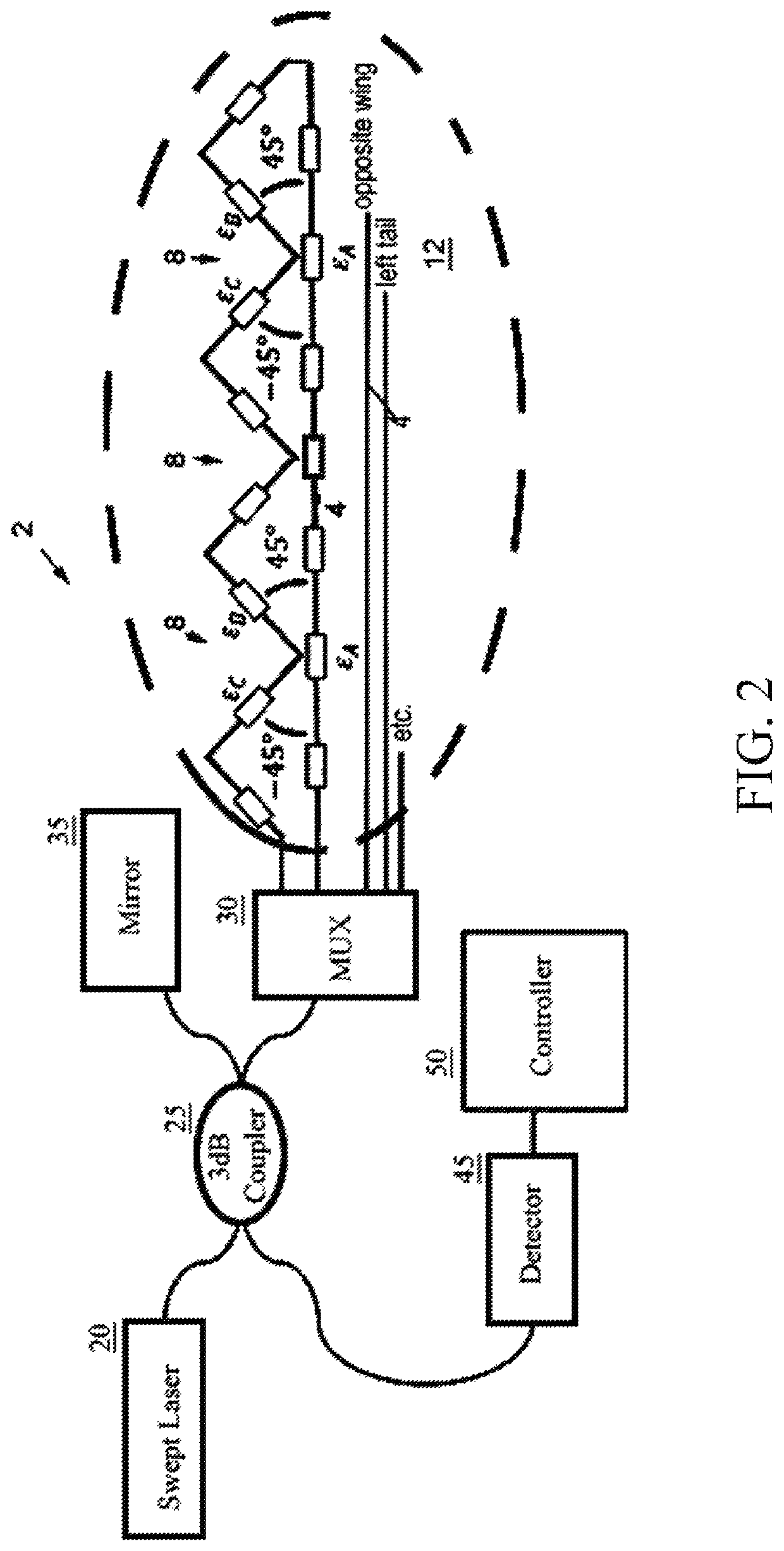Fiber optic system for monitoring displacement of a structure using quaternion kinematic shape sensing
a fiber optic system and displacement technology, applied in the direction of force measurement by measuring optical property variation, structural/machine measurement, instruments, etc., can solve the problems of high accuracy strain measurement that is not readily achievable by conventional resistive or optical strain gauges, and the euler approach is heavily dependent on trigonometric functions, so as to eliminate compound errors, low cost, and reliable
- Summary
- Abstract
- Description
- Claims
- Application Information
AI Technical Summary
Benefits of technology
Problems solved by technology
Method used
Image
Examples
Embodiment Construction
[0030]The present invention is a quaternion-based method and system of rendering the shape of a single or multi-core optical fiber assembly in three-dimensional space in real time based on measured fiber strain data. The optical fiber assembly includes a continuous closed-loop fiber optic core 4 with uniformly-spaced fiber Bragg grating (FBG) sensors 8 arranged in delta-triplets such that the sensors 8 are arrayed at 45° deltas.
[0031]As shown in FIG. 1, the preferred fiber that is used is a single-core optical fiber mounted in a sawtooth configuration in which the single fiber 4 is surface-mounted or embedded along the entire span of the flight control surface (e.g., a wing), running directly end-to-end along the leading edge, doubling back to the near end in a sawtooth pattern that spans the mid-section of the flight control surface, and running directly end-to-end along the trailing edge.
[0032]The fiber optic cores 4 extend entirely across a structure to be monitored such as a win...
PUM
 Login to View More
Login to View More Abstract
Description
Claims
Application Information
 Login to View More
Login to View More - R&D
- Intellectual Property
- Life Sciences
- Materials
- Tech Scout
- Unparalleled Data Quality
- Higher Quality Content
- 60% Fewer Hallucinations
Browse by: Latest US Patents, China's latest patents, Technical Efficacy Thesaurus, Application Domain, Technology Topic, Popular Technical Reports.
© 2025 PatSnap. All rights reserved.Legal|Privacy policy|Modern Slavery Act Transparency Statement|Sitemap|About US| Contact US: help@patsnap.com



